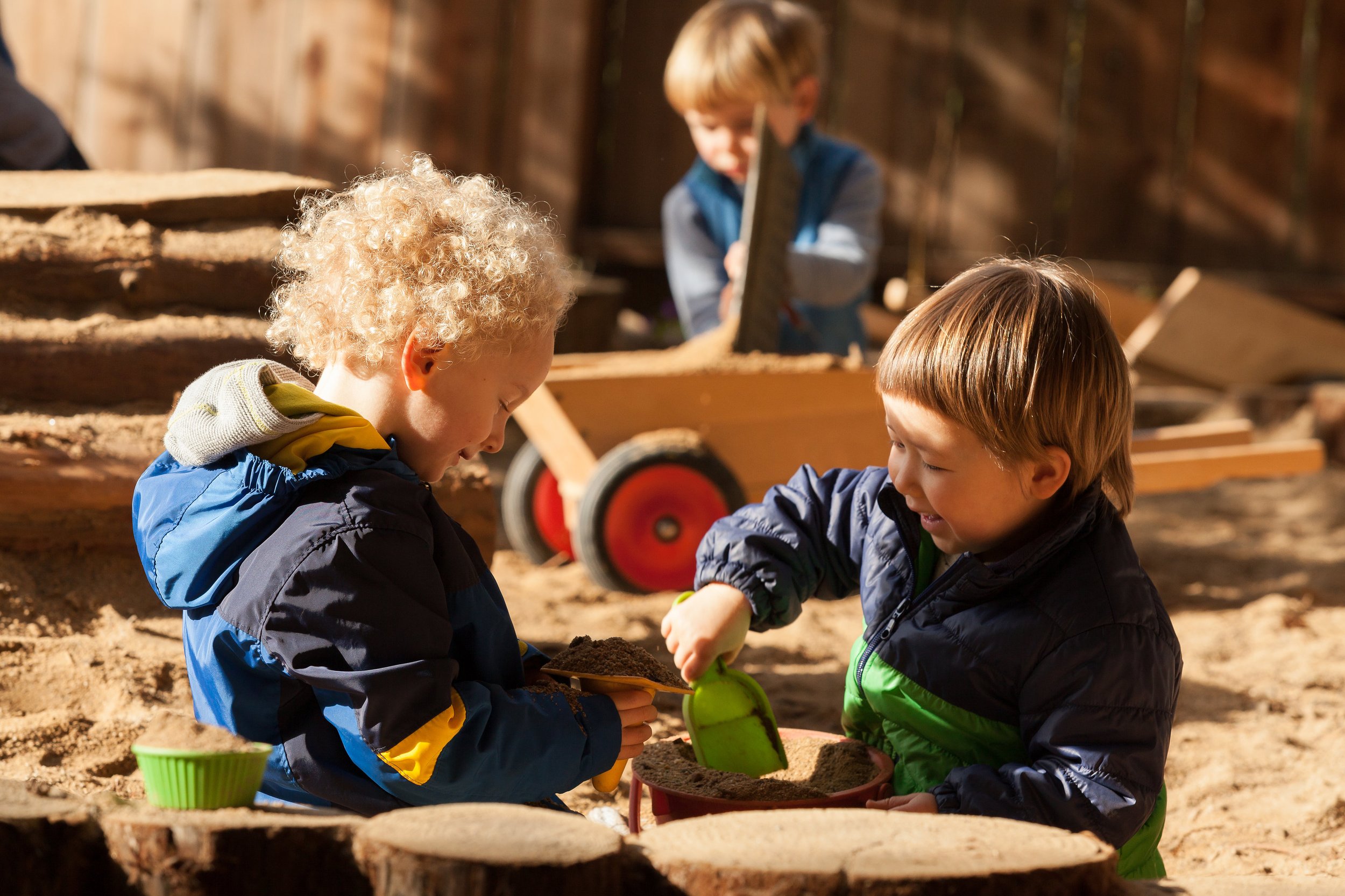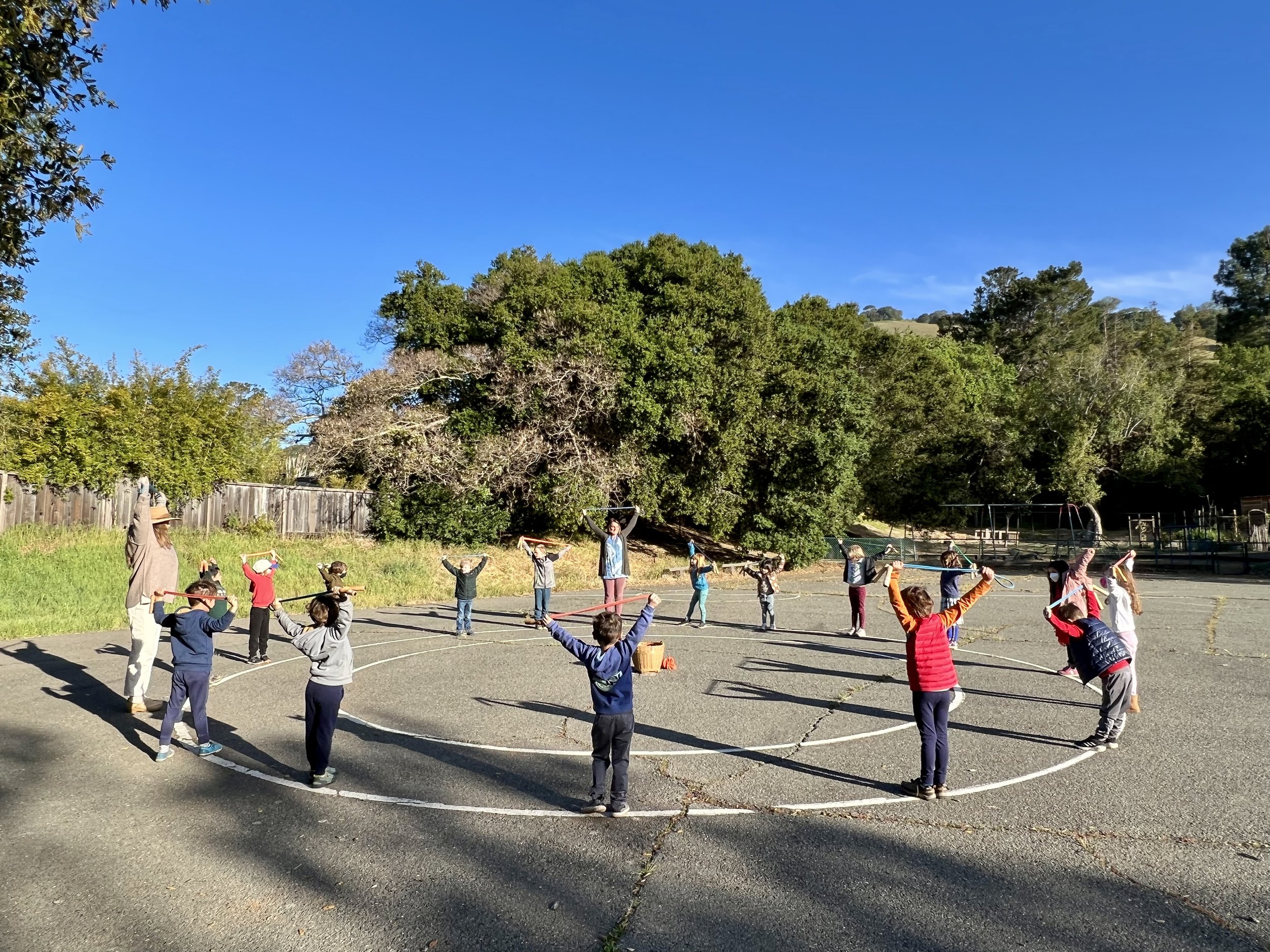Early Childhood and Math
by Julia McIlroy, middle school math teacher and MWS math program director
Babies and children love math. Give them some wooden blocks and they will happily spend long periods of time building and arranging them—and knocking them down. Children will look up at the sky and be delighted by the V formation of birds flying overhead. They are fascinated by a daisy and happily pull off each petal in turn. Split a treat to share and you can be sure a child will ensure it is exactly in half.
In fact, science has proven that we are adept mathematical thinkers from an early age. Even babies notice when there’s an unexpected number of objects. However, as soon as children enter school, their confidence in their mathematical abilities declines with every passing year. So what are we, as a society, doing wrong? Or perhaps, the better question is how is Waldorf getting it right?
During my first child development class in college, I was stunned to recognize how developmentally attuned Waldorf education is. Every developmental milestone is met with an appropriate curriculum that supports and nurtures it, in ways science and educators are just now figuring out how to study and quantify.
For example, in a recent journal article, Stanford education researchers noted the importance of fingers to mathematical understanding. Finger perception in first grade is a better predictor of math achievement in second grade than tests. Even college students’ finger perception predicts their scores on calculation tests. In fact, musicians’ achievement in higher mathematics, a relationship that has been noted for many years, is now thought to be due to their opportunities to develop good finger perception.
At the end of the article, the Stanford researchers say that unfortunately, there are no known educational systems that include finger play in their curriculum. But there is one. Waldorf teachers have been integrating finger play from preschool into the grades for the last century.
Watching the ease and joy of a preschool or kindergarten Waldorf classroom, it’s easy to assume that there is no set curriculum and teachers just let “kids be kids.” True, you won’t find children at desks completing math worksheets. And yet there is a carefully considered scope and sequence of learning starting in preschool. Each activity, game, song, and task in which they engage has been carefully curated to develop every aspect of a child’s mind, body, and heart.
For example, in preschool and kindergarten, math is brought in through songs, like "three little blackbirds sitting on a tree…," and music and its intervals when children stomp their feet through the rhythm. Even chopping vegetables for soup is an opportunity to gain math skills when they are asked to cut pieces into the “same size,” or when they are asked to share something equally with friends. Teachers are not directly using numbers or the word math, but the concepts and foundation of this beautiful art are being sewn carefully in the young being.
In Waldorf education, every interaction between student and teacher is thought out, from the rhythm of the day down to the color of the teacher’s apron. It is a deeply intentional curriculum and it is in line with the practices of the highest performing countries. For example, in Finland, students do not learn formal mathematical methods until after 7 years old and yet perform best on the international assessment math test.
How do you prepare your child for learning mathematics in the grades? Let them play! Play with blocks, sticks, build forts, skip, jump, and learn the capacities of their body. Finger knit, cut paper, and craft. Play games and puzzles with them; game playing is linked to higher performance in math in the later years. Games involving dice are particularly beneficial. Remark on the beauty of math in everyday life: from the division of a piece of fruit to the patterns found in the petals of a flower.
Science may be just starting to catch up, but Waldorf has been creating fully-dimensional, engaged, and well-prepared human beings for over a century.
Read more about our math program in the article Teaching Math in Waldorf, or learn more our wonderful math program coordinator and middle school math teacher Julia McIlroy here.



